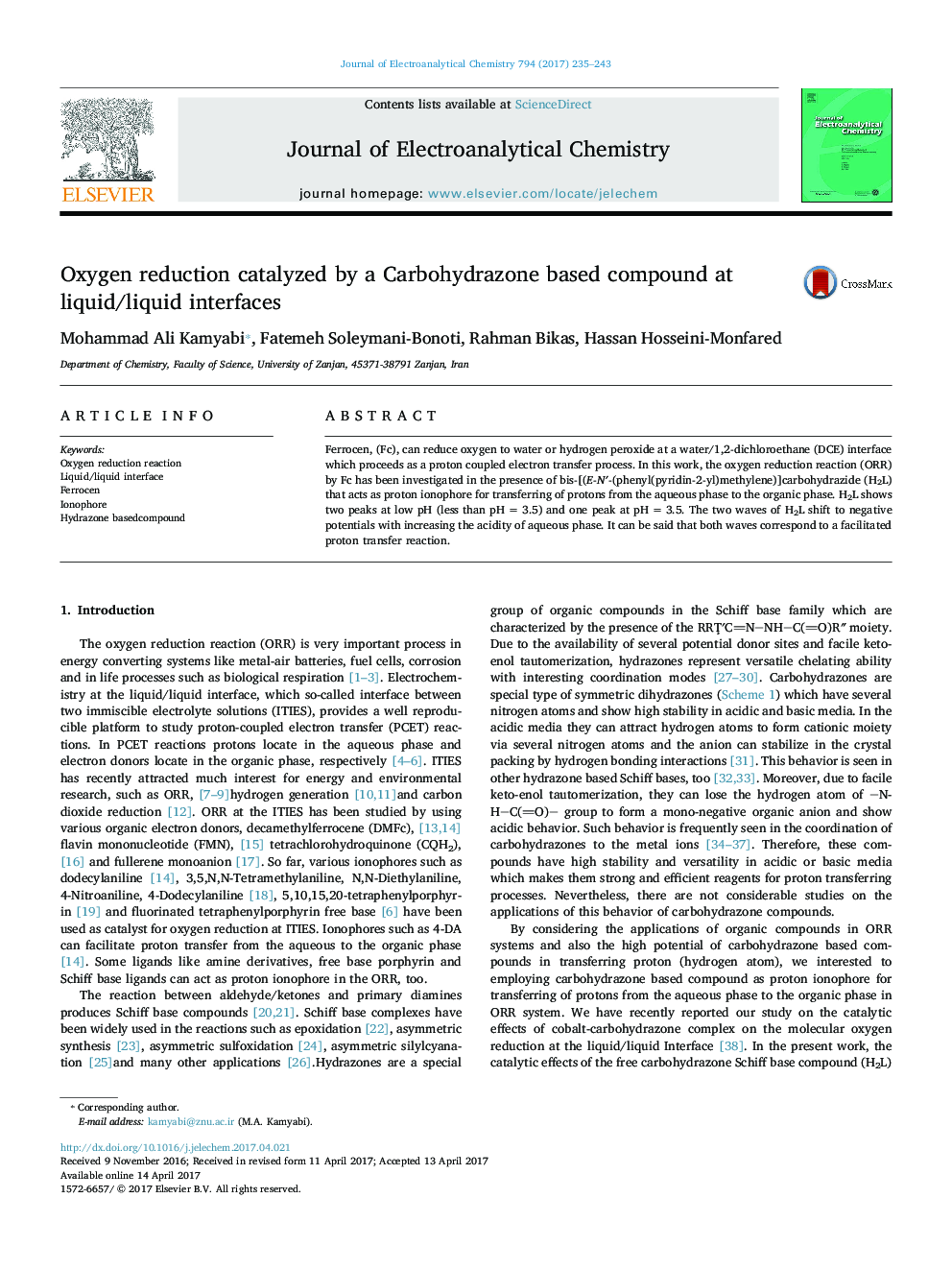| Article ID | Journal | Published Year | Pages | File Type |
|---|---|---|---|---|
| 4907876 | Journal of Electroanalytical Chemistry | 2017 | 9 Pages |
â¢Oxygen reduction at liquid-liquid interface by using hydrazone based ligand as catalyst.â¢Using a Schiff base ligand as proton transfer agent at liquid-liquid interface.â¢Using ionophore with more than one site for proton transfer at liquid-liquid interface.
Ferrocen, (Fc), can reduce oxygen to water or hydrogen peroxide at a water/1,2-dichloroethane (DCE) interface which proceeds as a proton coupled electron transfer process. In this work, the oxygen reduction reaction (ORR) by Fc has been investigated in the presence of bis-[(E-Nâ²-(phenyl(pyridin-2-yl)methylene)]carbohydrazide (H2L) that acts as proton ionophore for transferring of protons from the aqueous phase to the organic phase. H2L shows two peaks at low pH (less than pHÂ =Â 3.5) and one peak at pHÂ =Â 3.5. The two waves of H2L shift to negative potentials with increasing the acidity of aqueous phase. It can be said that both waves correspond to a facilitated proton transfer reaction.
Graphical abstractDownload high-res image (160KB)Download full-size image
